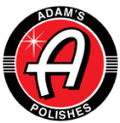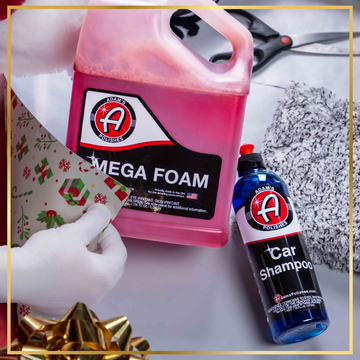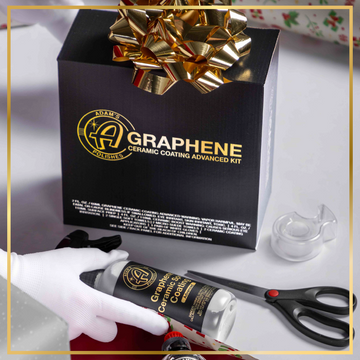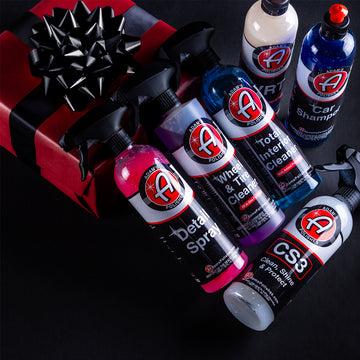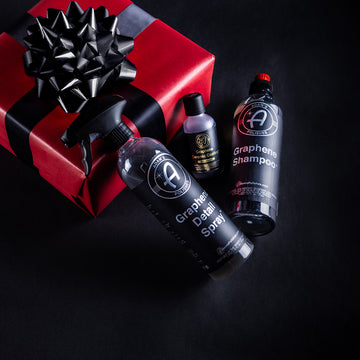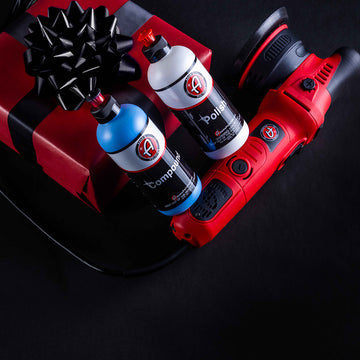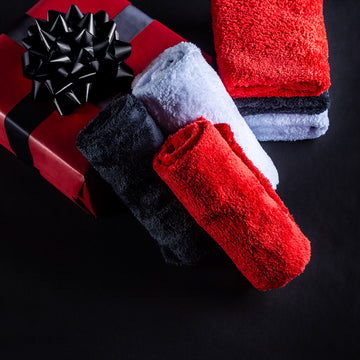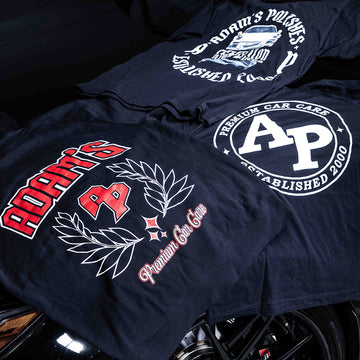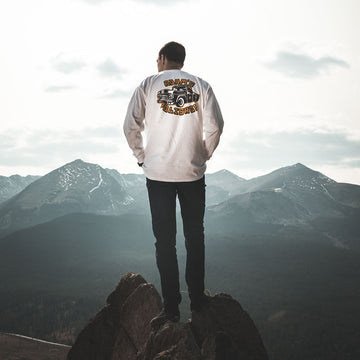There's no debate - having clean wheels and tires will make your vehicle stand out from the rest! Thoroughly cleaning your wheels and tires is one of the most important aspects of washing your car, and once they're clean and looking right, you will start to notice that almost everyone else has dirty wheels. Late model trucks and SUV's like the GMC Denali in this video have wheel and tire setups that have become increasingly bigger over the several years, so that naturally draws more attention to your eye. Brake dust and dirt will stand out even more with large wheels and performance brakes, so wouldn't you rather see clean, shiny wheels and tires instead of dirt and grime? In this video, Joe will walk you through the process to safely clean the wheels and tires, to keep them looking proper for years to come.
Start out by gathering all of the necessary materials you will need to clean the wheels and tires, along with your wash pads, wash mitts, soap, and drying accessories that you will use on the rest of the vehicle after you have the wheels and tires looking great. It's best to prep all of your materials before you begin and have everything organized - that way you aren't running back and forth during the process looking for a lug nut brush or a clean drying towel or any other items that you may need that will cause standing hard water to sit on the surface longer than it should. One final very important thing before you start - make sure the wheels and brake components like the caliper and rotor are cool to the touch before begin cleaning! Spraying water or chemicals onto a hot or warm wheel surface can cause damage such as staining and discoloration, or even warping of the rotors, so play it safe and allow them to cool down for 30 minutes or so if you just came back from a drive!
The most thorough way to clean wheels and tires is by utilizing a pressure washer along with your various brushes and chemicals. A pressure washer like the Adam's Pressure Washer 2.0 will blast more dirt and debris from the cracks and crevices of a wheel than a standard garden hose, but where it will really benefit you is cleaning out plastic and carpeted inner wheel wheels that trap considerable amounts of dirt, mud, tar, leaves, grass, and other road debris that lodge into the carpet fibers. Start by heavily rinsing the wheel well, then rinse any excess dirt and debris from the wheel and tire, making sure to keep the pressure washer stream a safe distance away from these surfaces. In this video, Joe uses our Wheel & Tire Cleaner and sprays it generously around the tire first, and then the face and barrel of the wheel next. In a matter of seconds you will see the brown discoloration from the mold release agents bleed out of the tire sidewall. This is also referred to as tire blooming, and the only way to remove it is with a strong chemical and scrubbing with the appropriate brush like our Rubberized Tire Brush. Note that you may need to clean the tire twice if you have heavy build up of greasy tire dressings - once the Wheel & Tire Cleaner foams up white, you know the rubber is now very clean.
Next, you will need to use a combination of our various wheel brushes to clean the wheel. The Adam's Rubberized Wheel Brush is great for cleaning the outer face of the wheel, then you can clean the inner barrel and caliper of the wheel with the Angled Wheel Brush. The Wheel Spoke Brush is a super soft brush option that makes cleaning the side of the spokes a breeze. Then you can finish off cleaning with the Trim & Lug Nut Brush to hit the tight areas like the lug holes, valve stem, and the rim edge of the wheel where the tire bead meets the wheel. The key is to work safe but efficient, so that the Wheel & Tire Cleaner does not dry onto the wheel - it is a strong chemical, so work in the shade if possible. If you have delicate wheels like a gloss black finish or a polished aluminum finish, our Eco Wheel Cleaner will be a safer option for you to avoid any potential staining or discoloration.
One of the most important things to remember to avoid damaging any wheels is to clean only one wheel at a time, so that there is no chance for chemical to dry on one wheel while you're trying to save time by cleaning more than one wheel at once. Rinse with a steady stream from the pressure washer, and make sure to spend a little extra time on the lug holes and edge of the wheel, where chemical could drip out later. Repeat this process for the remaining wheels, and remember, if you have large brakes and calipers, you may have to move the car forward or backward two or three feet to access the portion of the inner barrel of the wheel that was blocked by the caliper during the initial cleaning.
